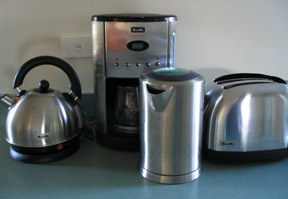Smart household appliances can help energy suppliers and network operators respond better and faster to hard-to-predict output from renewable energy sources. With this approach, they can more easily avoid high imbalance costs, especially during the winter. This is one of the findings the Linear research project has presented in Brussels after five years of studying the technical and economic possibilities offered by controllable energy consumption for family dwellings in Flanders.
By making household appliances “smart”, it becomes possible for energy suppliers and network operators to connect numerous washing machines, dishwashers, etc. at the same time. And yes, they can then absorb energy spikes from, for example, a strong wind, or postpone start-up until unexpected, low-lying fog has dissipated and solar panels can begin to function again. Automatic demand control therefore ensures that the electricity network can more flexibly respond to generation from weather-dependent sources. As a result, electricity from renewable energy sources can be tapped to the greatest extent possible, thereby making it possible, in the future, to add more renewable energy sources to our electricity network.
Linear compared this automatic demand control with variable rate control possibilities. The results showed that most families took little account of the six rate categories per day Linear sent them the day before and quickly went back to their old consumption patterns. Families with smart household appliances, on the other hand, continued to flexibly programme these for a year and a half. It is also apparent that automatic control is more interesting for energy companies than rate control: with automatic systems they can respond to changes in the weather throughout the day, whereas price controls only operate based on predictions made up to one day in advance.
When energy suppliers take more or less energy from the network than they supply, and the network operator has to correct for the difference using its balancing reserves, the suppliers must pay an imbalance cost. If the Belgian network operator is forced to activate additional strategic reserves this winter, costs could amount to €4,500/MWh (approximately 100 times higher than usual) as a result of the limited generation capacity this year. Energy suppliers are facing high costs due to this situation and are being encouraged to either purchase sufficient amounts of energy or disconnect clients, against payment, so as to prevent a blackout. Consumers who can adjust their demand to match the available energy, e.g. through automatic demand control, can help energy suppliers and network operators better manage imbalance costs.










